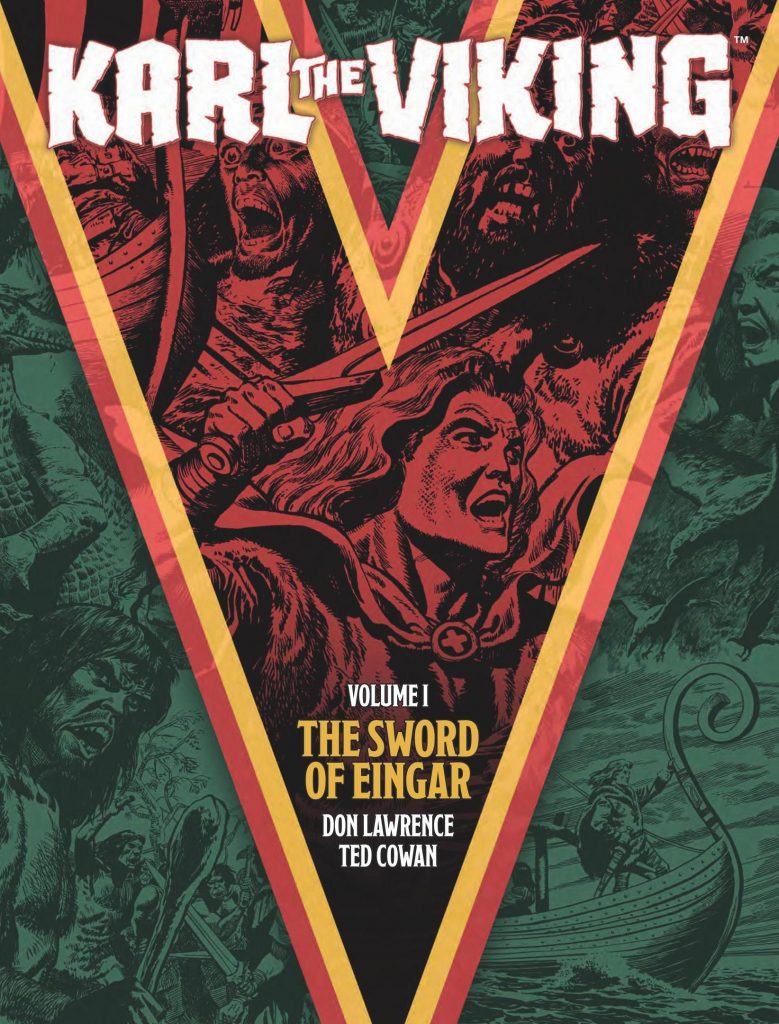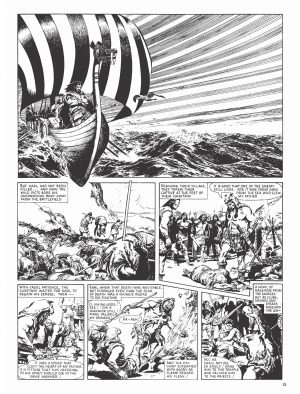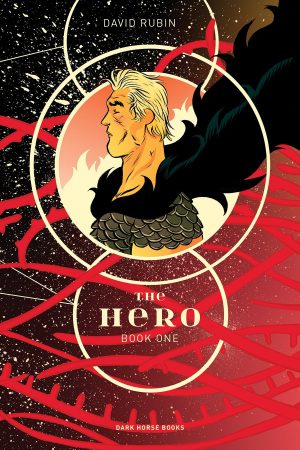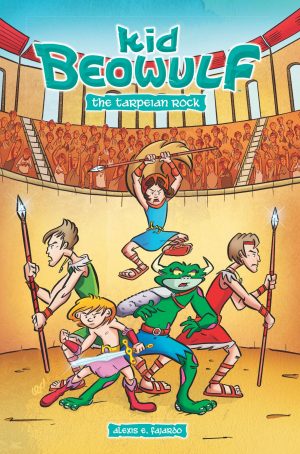Review by Karl Verhoven
Don Lawrence ranks among the greats of British comic art, but his fame largely rests on the sumptuous painted pages that he produced for The Trigan Empire from 1965. Finding anything Lawrence drew before that has until now involved an expensive trawl through auction sites, piecing together runs of early 1960s comics serialising other work. Preventing such expense alone makes The Sword of Eingar a welcome publication, but in the 21st century is it any more than a historical curiosity?
As conceived by Ted Cowan, Karl the Viking has the same exotic sweep as the then popular Prince Valiant strip, offering swashbuckling adventure as Karl travels to exotic lands mixing with cultures well beyond expectation. The opening twist is that Karl’s actually Saxon himself, taken back to the Norselands as a baby after a Viking raid and raised as the chief’s son. Cowan starts at the beginning, giving Karl a grounded history, and develops him into a very capable warrior, yet one able to think beyond his sword, and surprises by reintroducing connections with his Saxon family.
Ken Bulmer is credited for writing in the opening credits, but all individual stories credit Cowan as sole writer. He packs considerable plot into every two page episode, but that’s nothing compared with what Lawrence draws. He settles early into a pattern of an attention-grabbing and increasingly beautiful large image to begin each episode, still frequently managing to include a further six detailed panels, these exquisitely composed. Most are filled with people, generally individually defined, but occasionally Lawrence limits the people to make good use of space and environment. Be it folk from other lands or strange creatures, Lawrence maximises the exotica, although a consistent weakness was designing convincing monsters, and that’s apparent here. However, his compositions are on a rising curve throughout the book, and the clarity astonishes considering what he packs into a panel.
Almost all British strips pre-dating the 1980s suffer from repetition. The writers never considered their weekly instalments would be remembered from one year to the next, never mind collected as books, so tended to fall back on recurring plot devices. One here is the frequent appearance of an old woman waving a bony finger making a threat or prophecy, yet overall Cowan avoids that repetition. He doesn’t avoid the obvious dialogue, which is the major flaw, telling readers what the art shows. Removing many word balloons would make for a better experience. “Karl, it is too big to be killed by one arrow! It is going to attack us!” is par for the course as far as much of the dialogue is concerned, but look beyond that and the plots move along at a clip. Karl is sent to exotic locations, Cowan hands Lawrence artistic gifts with the characters and creatures, and there are some genuinely clever cliffhangers ending episodes. Try to figure out how Karl survives before it’s revealed!
Many fondly remembered strips from the past don’t live up to expectation when reprinted years later. With the caveat that the dialogue is poor, Karl the Viking doesn’t disappoint. The plots pack a lot in as they twist and turn, and the art is gorgeous. More follows in Voyage of the Sea Raiders.





